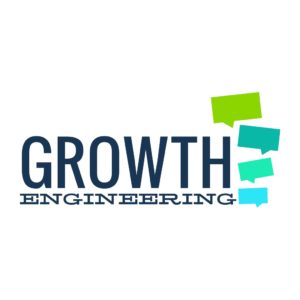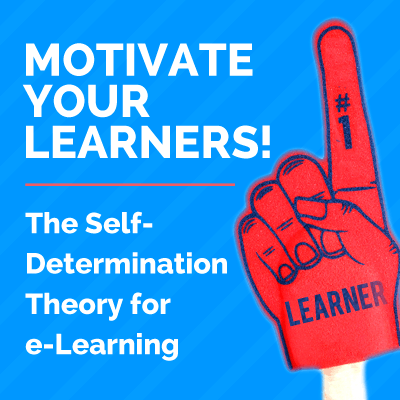Self-Determination Theory: The Holy Grail Of Learning And Development
Just imagine if you’d loved every single lesson you ever had at school. What if your educational experience had been a bit different, a bit more exciting, a bit more personal? Imagine what your time at school would’ve been like then. Just think about the impact that would have had on your career—where would you be now? If your physics teacher had tried a little harder to engage you, you could be at CERN right now, naming subatomic particles after yourself!
The thing is, when we love our learning when we’re engaged and passionate about it, the experience is entirely different. When you love learning, you want to feel that way all the time. You can get obsessed with a topic, and hungry to learn everything about it. It’s at the back of your mind even when you’re not actively learning about it. You start to wonder how it affects other things, what impact it has.
And you might even wonder ‘what if this was different?’ or ‘how can I make this even better?’. That, ladies and gentlemen, is how innovation is born. It’s only by inspiring this insatiable thirst for knowledge that your learners can reach new heights. So, how can we get this curiosity, this self-driven love of learning in our learning programs?
You don’t want to feel like you’re begging your learners to engage with the training program—the goal is to make learners intrinsically motivated to learn. It’s not just because the fulfillment of learning is such a fundamental human need. The impact of an engaging learning culture in the working environment is huge. This love of learning and celebration of knowledge and expertise makes the workplace a happier more dynamic place.
But how can we engender and cultivate this sense of passion and curiosity? The good news is, scientific research has given us a few pointers. Though we still can’t pinpoint a foolproof formula, we, at least, know the mechanics and the process that needs to be in place to give learners a sense of control and purpose.
At Growth Engineering, we’ve built our learning technologies to fit better with human behavior as it actually is, not as we’d like it to be. Ryan & Deci’s model of self-determination [1] is one that’s pretty close to my heart. What it tells us is that to grow an army of intrinsically motivated learners, we need to have 3 things in place:
1. Competence
First, we need to give them a sense of competence over the subject area. We need to show them that they are mastering the subject and gaining competence. This means we need break the learning down into bite-sized chunks.
By doing this, the learning feels more like a journey, and an ongoing path of progression. As the learners gain competence, we also need to reward, recognize, and praise their efforts. These regular pats-on-the-back help build confidence and positive associations around the learning experience.
The Solution
Microlearning campaigns take the traditional model of learning and, quite literally, rip it to pieces! In the old days, learners might receive a 45-minute eLearning unit every few months. Even if they manage to stay awake until the end, that knowledge will quickly leak away over time, leaving them with a vague memory of clicking through a slideshow.
In a microlearning campaign, your learners receive a short learning task every day that can be completed in a couple of minutes. For the best results, a microlearning campaign should be planned as a mobile-first exercise. Not only does this complement the short-and-snappy nature of the content, but it lets you reach your learners wherever they are.
2. Relatedness
Secondly, we need to facilitate relatedness. It’s not enough to apply learning in an academic context. Your learners need to relate the knowledge to their actual roles and jobs. Learning doesn’t happen in a vacuum, and you can’t afford to ignore the social aspect.
You need to make sure that your learners have plenty of opportunities to learn together and share the journey. Having the chance to discuss a subject, or just bounce ideas around, shows learners the impact of their new knowledge and how it relates to the world they work in.
The Solution
Gamification takes the elements that make games so addictive and applies them to other scenarios, like learning. You can take this to another level by adding an element of competition. Instead of just asking every learner a question each day, pit them against each other in quiz-based combat. Those badges will be all the sweeter when they’ve been wrestled out of the hands of somebody else!
To keep your campaign from getting repetitive, you also need to include a good variety of content and activities that get the learners thinking about how they apply the learning. Instead of asking them for ‘the correct answer’, ask them for their opinion, ask them for their advice, and ask them for examples from their working day. You might be pleasantly surprised by the results.
3. Autonomy
This leads nicely to the final point, the need to give our learners the autonomy to express themselves, give their own perspective, and add depth to the topic. You need to encourage your learners to build on the training, put their stamp on it and make it their own.
When they turn into passionate advocates for the knowledge, they’ll begin to coach it, mentor it and actively push the learning to their peers. The great thing is, as soon as one person shares their knowledge, it opens the floodgates for everyone and ignites the spark of a true learning culture.
The Solution
Today, most learning managers accept the crucial role that social functionality plays in a learning platform. What they might not be so clear on is how best to use that social functionality. A single news feed is great for creating a sense of community, but to make the most of your learners’ hidden knowledge, you need to give them a place to share their expertise with like-minded people.
Topic-specific discussion groups are fertile breeding grounds for innovation. These areas help you identify key learning assets, but they do so much more for your learners. It gives them a space to flaunt their expertise and help their fellow learners. Once you see who the real experts are, you can even assign specific expert user permissions, unlocking additional functionality. This shows the learners that they’re not just passive consumers—if they want to get involved, they can become trainers in their own little online classrooms!
Final Words
At Growth Engineering, we’ve seen at first hand the difference a little self-determination can make to a learning program. Forcing your learners to do something they don’t want is a battle you’ll never win. The key is to create something they can’t resist, something that shows them what it really means to love learning. Once you put the control into your learners’ hands, they can help you take your training program to heights you’d never even imagined!
References:










